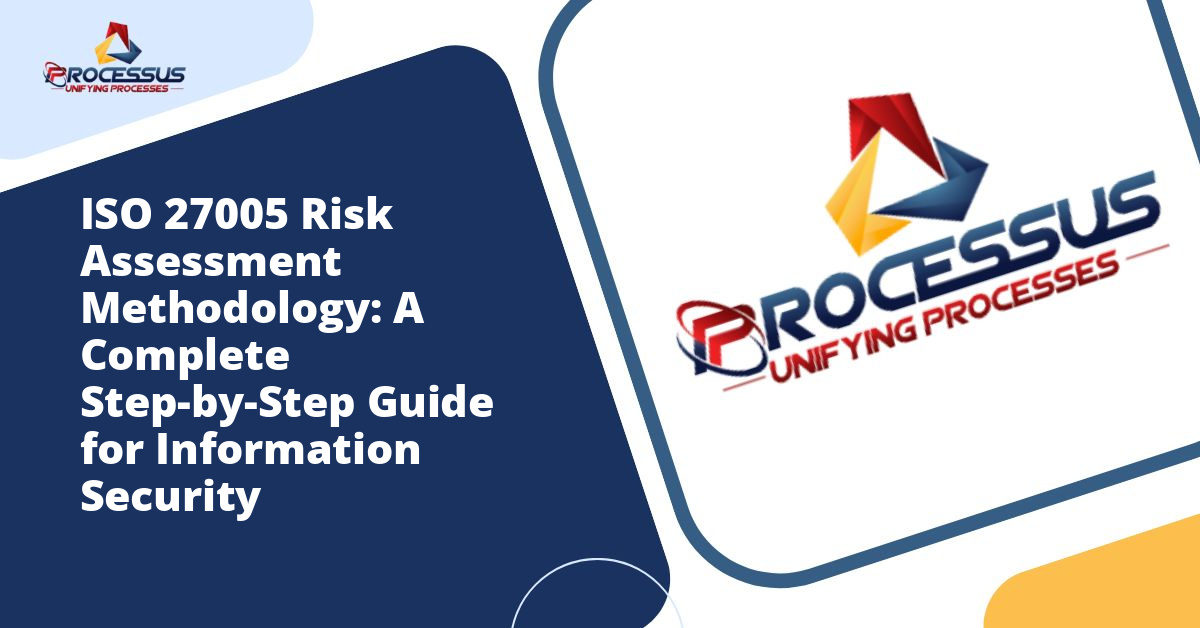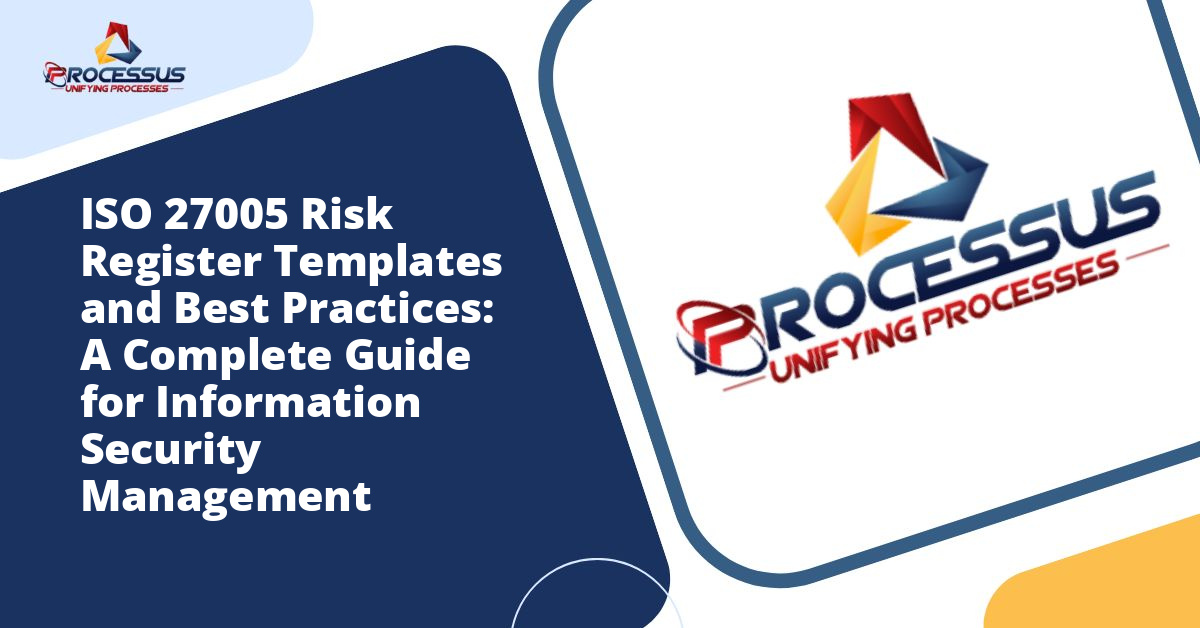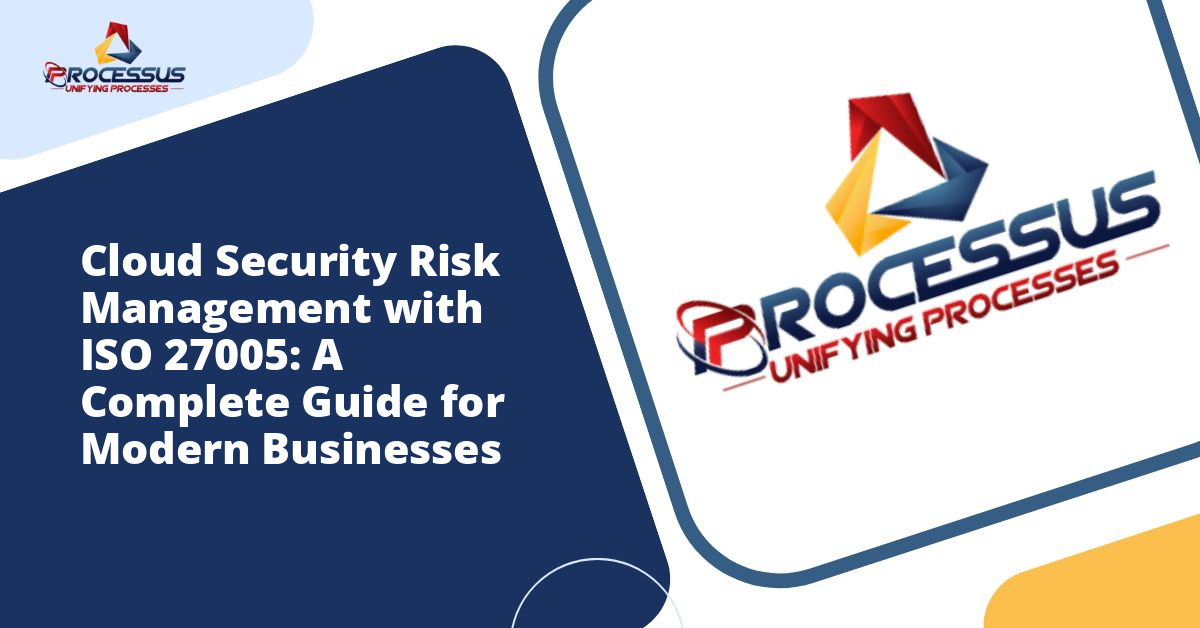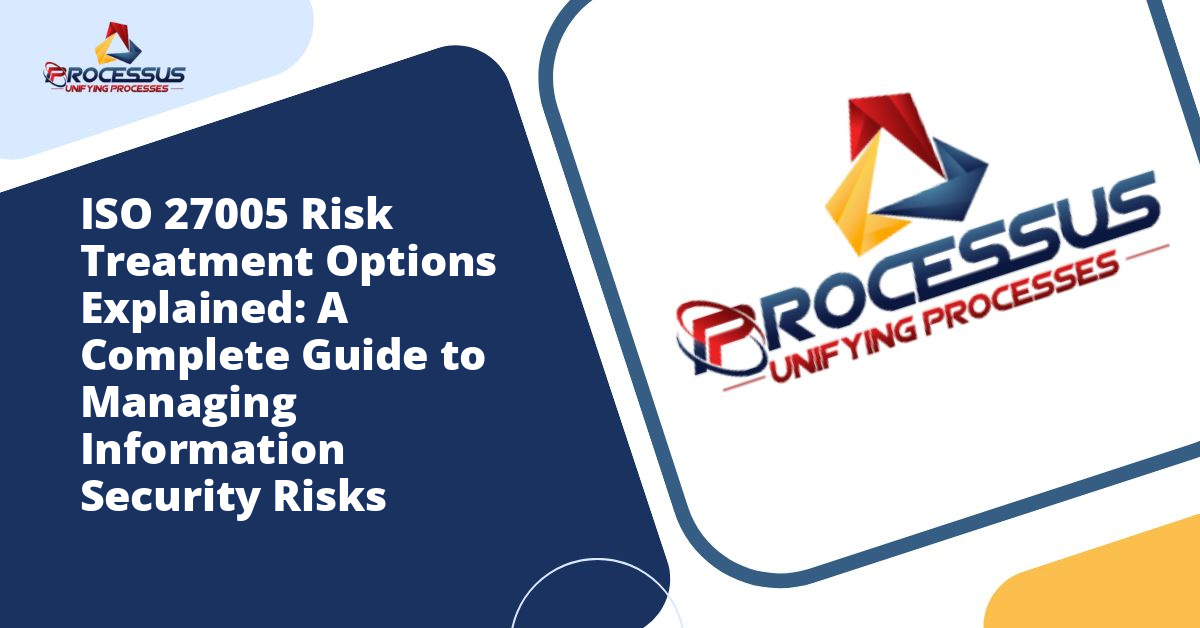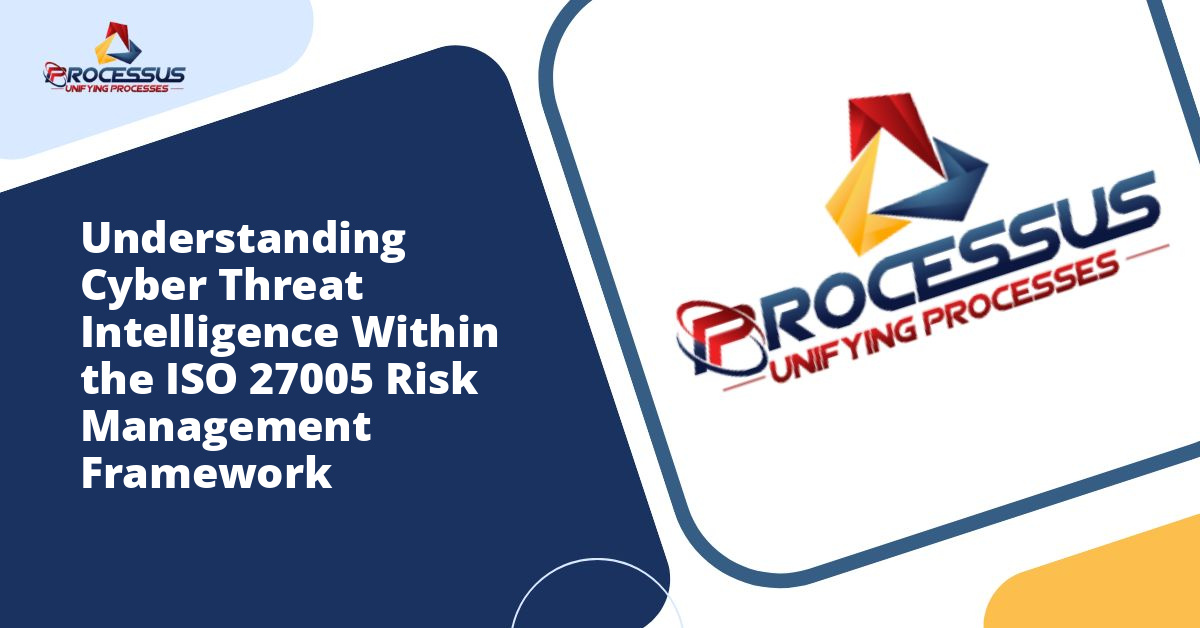In today’s digital landscape, organizations face an ever-growing array of information security threats. From data breaches to ransomware attacks, the consequences of inadequate security measures can be devastating. This is where ISO 27005 comes into play, offering a structured approach to information security risk management that helps organizations identify, assess, and treat risks systematically.
ISO 27005 provides a comprehensive framework for managing information security risks, complementing the broader ISO 27001 information security management system standard. Understanding and implementing this methodology is crucial for any organization serious about protecting its information assets and maintaining stakeholder confidence.
Understanding ISO 27005 and Its Importance
ISO 27005 is an international standard that provides guidelines for information security risk management. Published by the International Organization for Standardization (ISO) and the International Electrotechnical Commission (IEC), this standard offers organizations a systematic approach to managing information security risks in a way that aligns with their specific context and needs.
The standard does not mandate a specific methodology but rather presents a flexible framework that organizations can adapt to their unique circumstances. This flexibility makes ISO 27005 applicable across various industries, organization sizes, and risk management contexts. The methodology supports organizations in making informed decisions about how to handle information security risks, whether through risk treatment, acceptance, avoidance, or transfer.
Implementing ISO 27005 brings numerous benefits to organizations. It helps establish a consistent approach to risk management, improves decision-making processes, enhances stakeholder confidence, and ensures compliance with regulatory requirements. Moreover, it enables organizations to allocate resources more effectively by focusing on the most significant risks.
The Foundation: Context Establishment
Before diving into the risk assessment process, organizations must establish the context in which risk management will operate. This foundational step sets the stage for all subsequent activities and ensures that the risk assessment remains relevant and aligned with organizational objectives.
Defining the Scope and Boundaries
The first task in context establishment involves clearly defining the scope of the risk assessment. Organizations need to determine which information assets, business processes, and organizational units will be included. The scope might cover the entire organization or focus on specific departments, systems, or projects. Clear boundaries prevent scope creep and ensure the assessment remains manageable and focused.
When defining scope, organizations should consider physical locations, technological infrastructure, business processes, and the information lifecycle. They should also identify any exclusions and document the rationale behind them. This clarity helps stakeholders understand what the risk assessment covers and what falls outside its boundaries.
Identifying Stakeholders and Their Requirements
Stakeholder identification is critical for successful risk management. Stakeholders include anyone with an interest in or influence over information security within the defined scope. This group typically includes executive management, business unit leaders, IT personnel, compliance officers, legal advisors, and sometimes external parties such as customers, suppliers, or regulatory bodies.
Each stakeholder group brings different perspectives, requirements, and concerns to the risk management process. Understanding these varying viewpoints helps ensure the risk assessment addresses all relevant concerns and produces actionable outcomes that satisfy diverse needs.
Establishing Risk Criteria
Risk criteria form the foundation for evaluating and comparing risks. Organizations must establish clear criteria for determining risk levels, including how consequences will be measured and how likelihood will be assessed. These criteria should reflect organizational risk appetite and tolerance levels.
Common approaches to risk criteria include qualitative scales (such as low, medium, high), quantitative measures (such as financial impact in specific currency amounts), or hybrid approaches combining both. The chosen approach should align with organizational culture, available data, and decision-making preferences. Consistency in applying these criteria throughout the assessment is essential for meaningful results.
Asset Identification and Valuation
Understanding what needs protection is fundamental to effective risk management. The asset identification process involves creating a comprehensive inventory of information assets and determining their value to the organization.
Creating an Asset Inventory
Information assets extend beyond just data and include hardware, software, personnel, facilities, and organizational reputation. The inventory process should be systematic and thorough, capturing all assets within the defined scope. Each asset should be clearly identified with relevant details such as location, owner, custodian, and classification level.
Organizations often categorize assets by type to make the inventory more manageable. Categories might include primary assets (business processes and information) and supporting assets (hardware, software, networks, personnel, site, and organizational structure). This categorization helps ensure nothing is overlooked and facilitates subsequent analysis.
Determining Asset Value
Not all assets have equal importance to an organization. Asset valuation involves determining the relative value of each asset based on its contribution to business operations and the potential impact of its compromise. This valuation considers confidentiality, integrity, and availability requirements for each asset.
The valuation process should involve asset owners and other stakeholders who understand the business context. Value can be assessed in terms of financial impact, operational disruption, regulatory consequences, or reputational damage. Some assets may have different values depending on which security characteristic (confidentiality, integrity, or availability) is compromised.
Threat and Vulnerability Assessment
Once assets are identified and valued, the next step involves identifying potential threats and vulnerabilities that could affect those assets.
Threat Identification
Threats are potential causes of unwanted incidents that may harm the organization and its assets. They can be natural (floods, earthquakes, fires), environmental (power failures, pollution), human (errors, malicious actions), or technical (hardware failures, software bugs). The threat identification process should be comprehensive, considering both internal and external sources.
Organizations should consider current threat landscapes relevant to their industry and geographic location. Threat intelligence sources, industry reports, and past incident data provide valuable input for this process. The goal is not to create an exhaustive list of every possible threat but to identify credible threats relevant to the organization’s context.
Vulnerability Assessment
Vulnerabilities are weaknesses that threats can exploit to cause harm. They exist in physical security, technical controls, organizational processes, or personnel practices. Identifying vulnerabilities requires examining existing controls and determining where gaps or weaknesses exist.
Common vulnerability assessment methods include technical scanning tools, security audits, penetration testing, and process reviews. The assessment should consider vulnerabilities in relation to identified threats. A vulnerability is only relevant from a risk perspective if a corresponding threat can exploit it.
Risk Analysis: Assessing Consequences and Likelihood
Risk analysis involves determining the level of risk by assessing both the potential consequences of risk scenarios and their likelihood of occurrence.
Identifying Risk Scenarios
Risk scenarios describe how threats might exploit vulnerabilities to impact assets. Each scenario combines a specific threat, a vulnerable asset, and a potential consequence. Creating realistic scenarios helps stakeholders understand risks in concrete terms rather than abstract concepts.
For example, a risk scenario might describe how an external attacker could exploit an unpatched vulnerability in a web application to gain unauthorized access to customer data, potentially resulting in regulatory fines, customer notification costs, and reputational damage.
Assessing Consequences
Consequence assessment involves determining the potential impact if a risk scenario occurs. Impact should be evaluated across multiple dimensions, including financial loss, operational disruption, legal and regulatory consequences, and reputational damage. The assessment should consider both immediate and long-term effects.
Organizations should use the risk criteria established during context establishment to ensure consistent evaluation. The assessment should consider existing controls but evaluate the impact assuming those controls fail or are bypassed, as this represents the actual risk exposure.
Determining Likelihood
Likelihood assessment estimates how probable it is that a particular risk scenario will occur within a given timeframe. This assessment considers factors such as threat capability and motivation, vulnerability exposure and severity, and the effectiveness of existing controls.
Likelihood can be assessed using historical incident data, industry statistics, expert judgment, or threat intelligence. Organizations should be realistic in their assessments, avoiding both excessive optimism and unwarranted pessimism. The goal is to develop a reasonable estimate that supports informed decision-making.
Calculating Risk Level
Risk level is typically determined by combining consequence and likelihood assessments. The specific calculation method depends on whether the organization uses qualitative, quantitative, or hybrid approaches. Qualitative methods might use a risk matrix that maps consequence and likelihood ratings to overall risk levels. Quantitative methods might calculate expected annual loss or other numeric risk measures.
The resulting risk levels enable organizations to prioritize risks and make informed decisions about treatment. Risks should be ranked to identify which require immediate attention and which can be addressed over time or accepted.
Risk Evaluation: Comparing and Prioritizing Risks
Risk evaluation involves comparing analyzed risks against the established risk criteria to determine which risks require treatment and their relative priorities.
Comparing Risks Against Criteria
Each identified risk should be compared against the organization’s risk acceptance criteria. This comparison determines whether the risk level is acceptable or requires treatment. Some organizations use multiple thresholds, such as acceptable, tolerable with management approval, and unacceptable.
The evaluation should consider not just the calculated risk level but also factors such as legal and regulatory requirements, contractual obligations, and stakeholder expectations. Some risks may require treatment even if they fall within technical acceptance thresholds due to these additional considerations.
Prioritizing Treatment Actions
Not all unacceptable risks can or should be addressed simultaneously. Organizations must prioritize treatment actions based on factors such as risk level, treatment cost and feasibility, quick wins versus long-term solutions, and interdependencies between different risks and treatments.
This prioritization process should involve key stakeholders and decision-makers who can allocate resources and approve treatment plans. The output is a prioritized list of risks requiring treatment, forming the basis for risk treatment planning.
Risk Treatment: Selecting and Implementing Controls
Risk treatment involves selecting and implementing measures to modify risk levels to acceptable thresholds. Organizations have four primary treatment options for each risk.
Treatment Options
Risk modification involves implementing controls to reduce either the likelihood or consequences of risks. This is the most common approach and includes implementing technical security controls, improving processes, providing training, or enhancing physical security measures.
Risk retention means accepting the risk without additional treatment, typically because the risk level is already acceptable or because treatment costs exceed potential benefits. This option should be a conscious decision with management approval, not a default position.
Risk avoidance involves eliminating the risk source, such as discontinuing a risky activity or choosing not to proceed with a planned initiative. This option is appropriate when risks are unacceptably high and cannot be reduced to tolerable levels.
Risk sharing or transfer involves shifting risk to other parties through insurance, outsourcing, or contractual arrangements. This option does not eliminate risk but changes who bears the consequences.
Developing Treatment Plans
For each risk requiring treatment, organizations should develop detailed treatment plans specifying what will be done, who is responsible, what resources are required, and when implementation will be completed. Plans should identify specific controls to be implemented, their expected effect on risk levels, and how effectiveness will be measured.
Treatment plans should be realistic and achievable given organizational constraints. They should also consider control interdependencies and ensure that implementing one control does not create new risks or vulnerabilities elsewhere.
Implementing Controls
Control implementation requires careful project management to ensure solutions are deployed effectively and deliver expected benefits. Implementation should follow established change management processes to minimize disruption and ensure proper testing and validation.
Organizations should document implemented controls, including configuration details, operational procedures, and maintenance requirements. This documentation supports ongoing control effectiveness monitoring and helps ensure controls continue to function as intended over time.
Risk Acceptance: Obtaining Management Approval
After treatment planning, residual risks (those remaining after treatment) must be formally accepted by appropriate management levels. This step ensures accountability and confirms that decision-makers are aware of and comfortable with the remaining risk exposure.
Risk acceptance decisions should be documented, including the rationale for acceptance and any conditions or caveats. The documentation should identify who accepted the risk and when, creating an audit trail for future reference.
Risk Communication and Consultation
Throughout the risk management process, effective communication and consultation with stakeholders is essential. This is not a separate step but an ongoing activity that should occur throughout the methodology.
Communication ensures stakeholders understand risks, treatment decisions, and their roles and responsibilities. It should be tailored to different audiences, providing technical details to security teams while offering business-focused summaries to executives.
Consultation involves actively seeking stakeholder input and incorporating diverse perspectives into risk management decisions. This collaborative approach improves risk identification, enhances treatment option development, and increases buy-in for implementation.
Monitoring and Review
Risk management is not a one-time exercise but an ongoing process. Organizations must continuously monitor risks, controls, and the risk management process itself to ensure continued effectiveness.
Continuous Risk Monitoring
Monitoring involves tracking identified risks to detect changes in their characteristics. New threats may emerge, vulnerabilities may be discovered, asset values may change, or controls may degrade over time. Regular monitoring helps organizations detect these changes and respond appropriately.
Monitoring activities include reviewing security incidents, tracking threat intelligence, conducting vulnerability scans, testing control effectiveness, and reviewing business changes that might affect risk profiles.
Periodic Review and Update
In addition to ongoing monitoring, organizations should conduct periodic comprehensive reviews of their risk assessments. These reviews ensure the assessment remains current and aligned with organizational changes. The review frequency depends on organizational context but typically occurs annually or when significant changes occur.
Reviews should reconsider all aspects of the risk assessment, from context and scope through asset valuation, threat and vulnerability identification, risk analysis, and treatment effectiveness. The goal is to maintain an accurate and current understanding of the organization’s risk landscape.
Common Challenges and Best Practices
Implementing ISO 27005 risk assessment methodology presents several common challenges that organizations should anticipate and address proactively.
Resource Constraints
Risk assessment requires significant time, expertise, and effort. Organizations often struggle to allocate sufficient resources, particularly in smaller organizations with limited security staff. Addressing this challenge requires executive support, clear prioritization, and potentially external assistance for specialized skills.
Maintaining Relevance
Risk assessments can quickly become outdated as technology, threats, and business contexts evolve. Organizations must build sustainable processes for keeping assessments current rather than treating them as point-in-time exercises.
Balancing Rigor and Practicality
Overly complex risk assessments can become burdensome and lose stakeholder engagement, while oversimplified approaches may miss important risks. Finding the right balance requires understanding organizational culture and capabilities while maintaining sufficient rigor to produce meaningful results.
Best Practice Recommendations
Successful ISO 27005 implementation benefits from several best practices. Start with manageable scope rather than attempting to assess everything at once. Engage stakeholders early and maintain their involvement throughout the process. Use existing information and avoid unnecessary duplication of effort. Document decisions and rationale to support future reviews and demonstrate due diligence. Integrate risk management with other organizational processes rather than treating it as a standalone activity.
Conclusion
ISO 27005 provides a robust, flexible framework for managing information security risks systematically. By following the step-by-step methodology outlined in this guide, organizations can develop a comprehensive understanding of their risk landscape and make informed decisions about how to protect their information assets.
The methodology’s strength lies in its adaptability to different organizational contexts while maintaining a consistent, structured approach. Whether you are just beginning your information security risk management journey or seeking to enhance existing practices, ISO 27005 offers valuable guidance for building resilient, risk-aware security programs.
Success requires commitment, resources, and ongoing effort, but the benefits of improved security, better decision-making, and enhanced stakeholder confidence make the investment worthwhile. As threats continue to evolve and information becomes increasingly central to organizational success, systematic risk management is not just a best practice but a business imperative.
By implementing ISO 27005 risk assessment methodology, organizations position themselves to anticipate, understand, and respond to information security risks effectively, protecting their assets, reputation, and stakeholder interests in an increasingly complex digital world.

